As the year draws to a close, it’s normal for us to look back on its highs and lows. 2021 was a good year for us. Despite an insane market, we were able to buy a house, and despite being incredibly busy both in and outside of work, we were able to find time to escape to the natural world. Unfortunately, as a side effect of a short supply of free time, my blog suffered. I hope to rectify this in 2022, but in the meantime, I continue to make almost daily posts on Flickr (www.flickr.com/photos/mabuckingham) and Instagram (@naturalistjourney).
For my 2021 year-end post I’ve decided to highlight my favorite 21 images of the year, presented in chronological order. Only a few of these were featured in earlier posts, and the rest are new to the blog. I hope you’ll join me for a look back at some incredible encounters, spectacular biodiversity, and special places.
1. Eastern Tiger Salamander
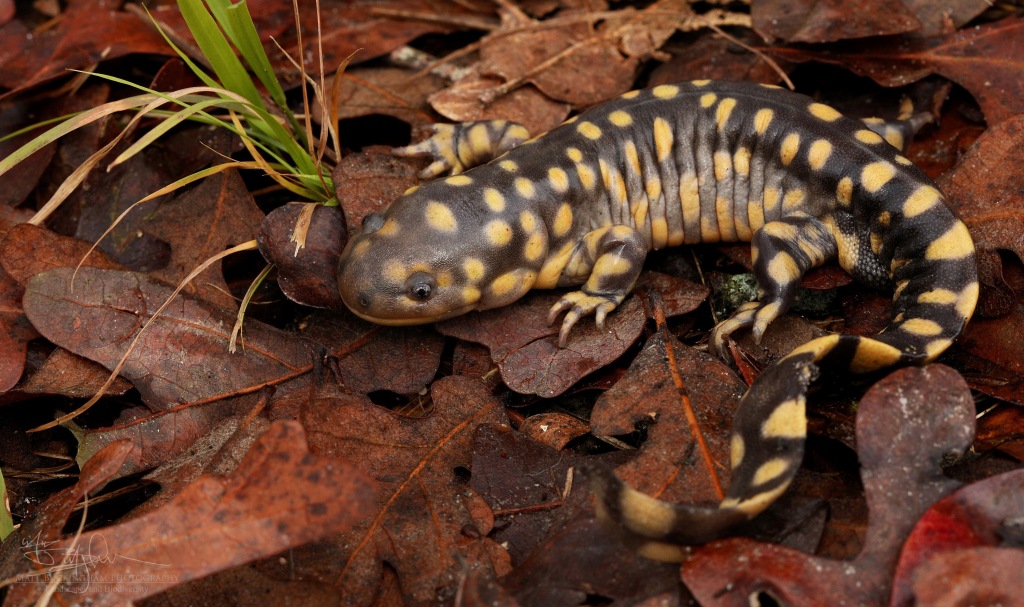
The year kicked off in a big way. On New Years Day, Caro and I met our dear friend John Williams at the edge of the Post Oak Savanna in pursuit of a creature of near mythical status in Texas, the eastern tiger salamander (Ambystoma tigrinum). I wrote about this experience at length in my first blog post of the year, and if you haven’t already, I highly recommend reading about our adventure there.
2. Northern Shoveler
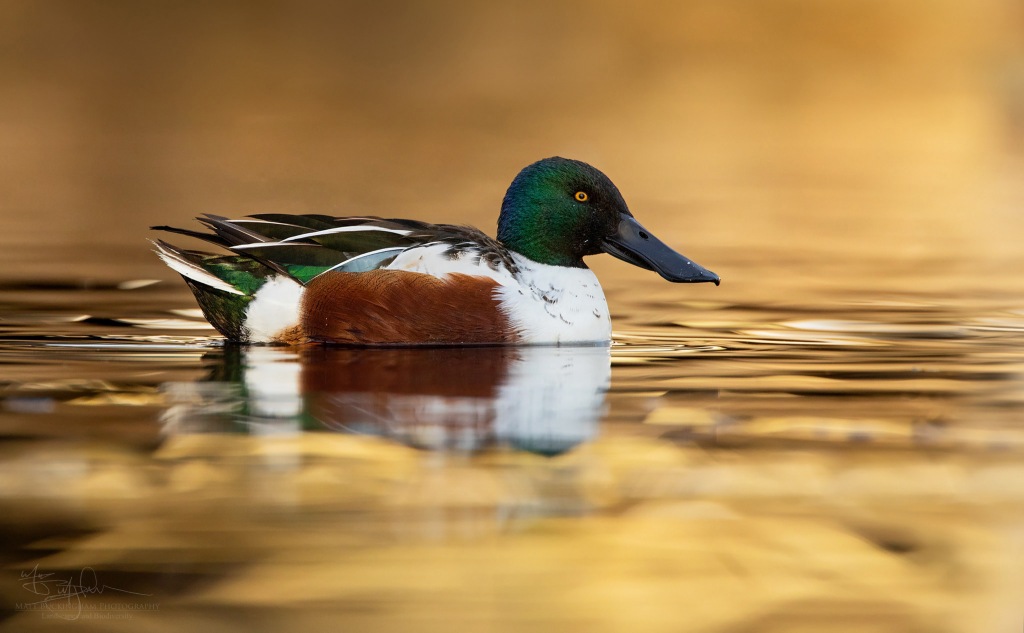
Also in January, Caro and I took a trip with James and Erin Childress to north-central Texas in pursuit of waterfowl. We were fortunate to find and photograph several species. My favorite image of the trip was this stunning Northern Shoveler (Anas clypeata) in water reflecting winter leaves illuminated by the rising sun.
3. American Robin

The end of January found Caro and I exploring familiar areas closer to home. On the last day of the month we found ourselves surrounded by a massive flock of American Robins (Turdus migratorius). I opted to lay down in the fallen leaves and before long the robins were foraging mere feet from me, flipping leaves in search of tasty morsels underneath.
4. Red-breasted Merganser
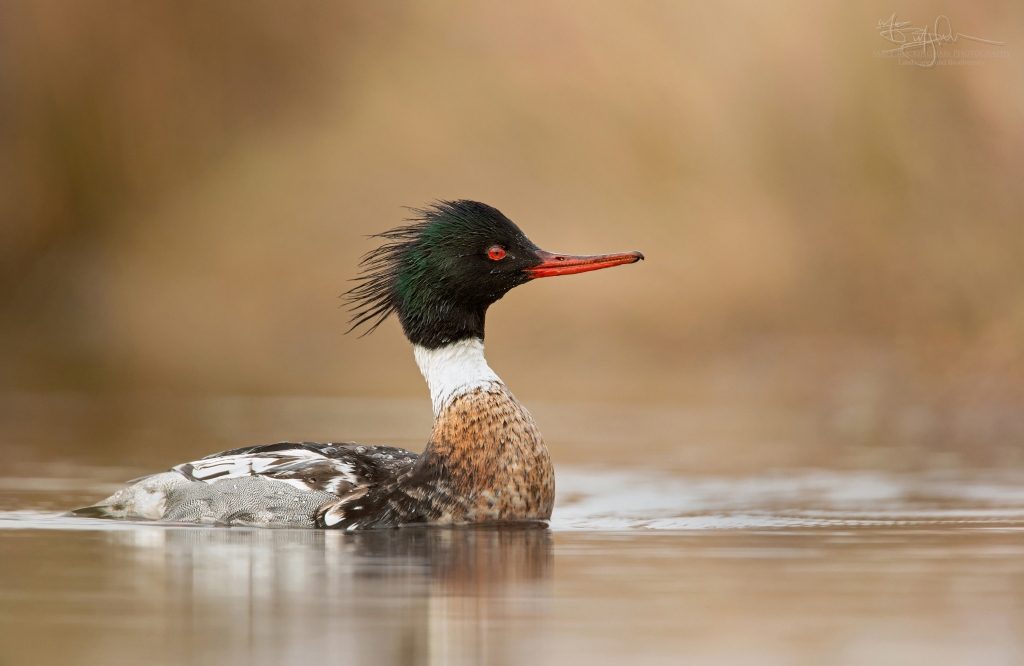
In early February, Caro and I took a weekend trip to the upper Texas coast. There I had an incredible encounter with the generally elusive Red-breasted Merganser (Mergus serrator). I wrote at length about the experience here.
5. North American River Otters

In February Texas was hit with a historic winter storm. While the storm was devastating in many ways, it also transformed the Pineywoods into something beautiful and created once in a lifetime conditions for photography. The first day of the storm, Caro and I set out to a local green space park to see what we might find. Much to our surprise and delight, we were treated to a trio of North American river otters (Lontra canadensis) playing in the snow and icy water. I covered this incredible experience in another post earlier this year.
6. Fox Sparrow

The snow from Winter Storm Uri lingered for a few days. The harsh conditions brought with them an influx of bird species seldom seen in numbers in the Pineywoods. The most notable were the Fox Sparrows (Passerella iliaca). We went from never having seen one in our neighborhood to having a dozen or more in our back yard at once. To capture this image I laid in the snow and covered myself in a white sheet, concealing my presence and allowing the birds to forage undisturbed mere feet away from my lens.
7. Cedar Waxwing

After the storm cleared and the snow melted, our neighborhood was invaded by Cedar Waxwings (Bombycilla cedrorum). They came in the thousands, filling the air with their sweet whistling, stripping ornamental trees of their berries, and bombarding the streets with their purple droppings. Despite their overwhelming numbers, photographing them in a natural setting was a challenge. This image was actually captured in the road of a nearby cul-de-sac as the waxwings dropped to the ground to drink from water accumulated in the curb.
8. Blue Butterwort
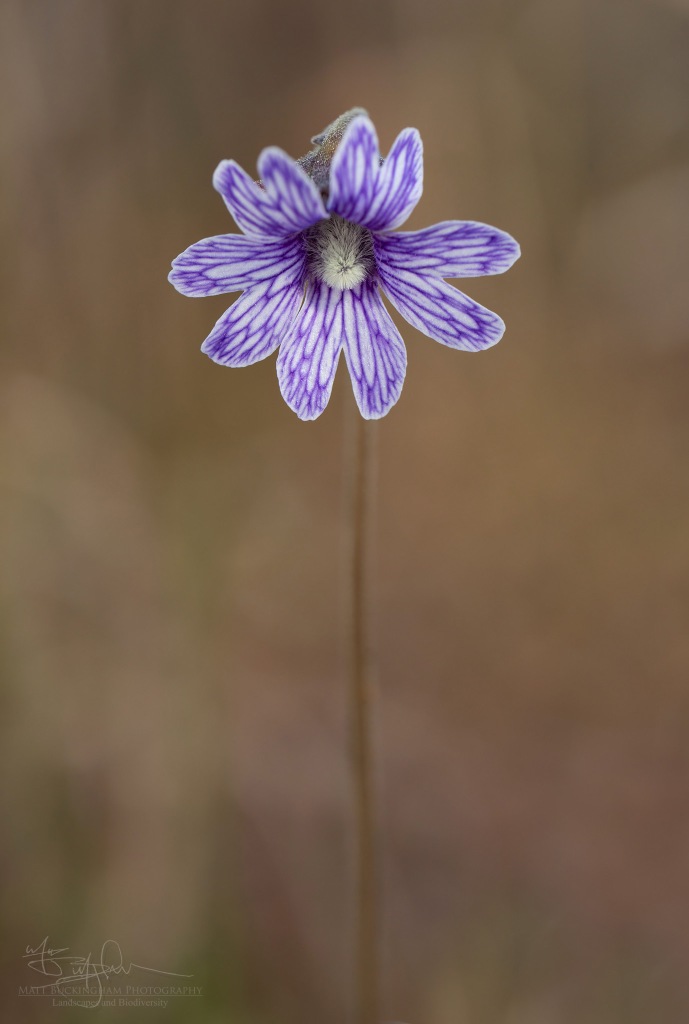
For Spring Break, Caro and I rented an AirBNB in Tallahassee, Florida and used it as a base to explore the panhandle. We trekked through wet pine savannas, flatwoods, and hardwood hammocks and were treated to a diverse flora that included numerous carnivorous species. One of the most striking was the blue butterwort (Pinguicula caerulea). I liked this image for its simplicity. Sometimes less is more.
9. Golden Club

While in Florida, we spent a good amount of time exploring the Apalachicola National Forest. In this magical place we came to a small drainage literally carpeted in golden club (Orontium aquaticum). The day’s light was nearly gone as I stepped into the murk and muck to capture this image. After I finished, Caro and I were treated to numerous bats gleaning insects from just above the water’s surface.
10. Luna Moth

Most years we’re treated to a few luna moth (Actias luna) encounters during our spring wanderings. This year Caro spotted one on a small stick in a rich hardwood stream bottom. It was a flawless specimen, and we watched as it took its first flight. Graceful and awkward at the same time, it took a few broad flaps and ended up landing on the ground a few feet away, in the most spectacular of settings among the leaves of emerging violets and a downed black cherry branch.
11. Vernal Forest

There is nothing like wandering through a rich hardwood forest in spring. The ground comes to life with emerging plants and wildflowers, and bird returning north fill the air with their varied songs. This was one of my favorite scenes from spring of 2021, a forest floor abloom with mayapple (Podophyllum peltatum) and golden groundsel (Packera obovata).
12. Southern Lady’s Slipper
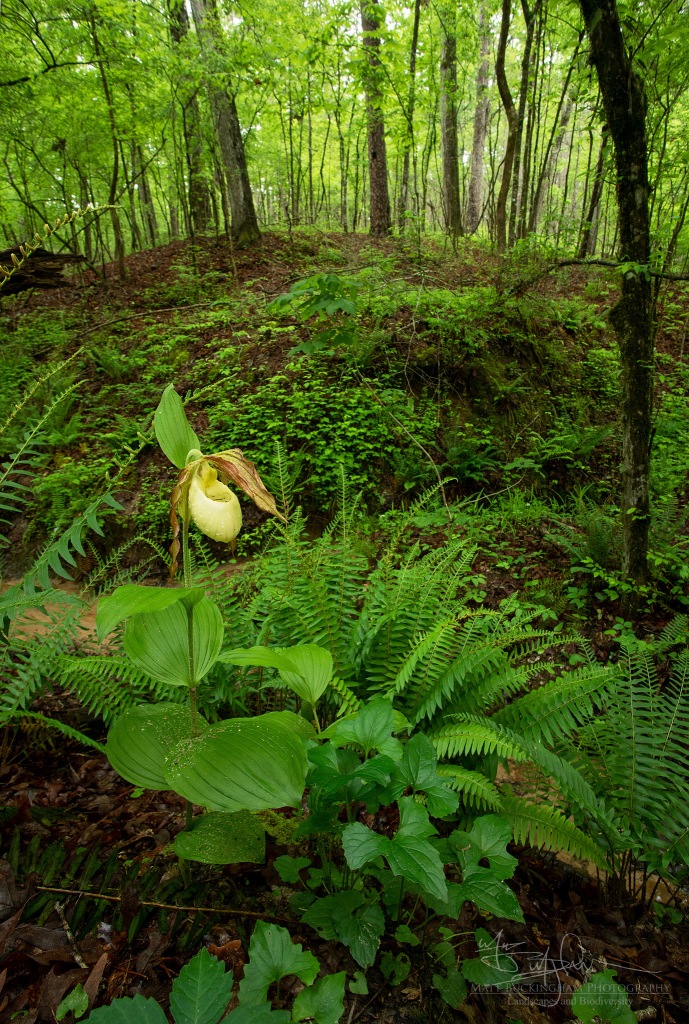
For my money, there are few wildflowers as charismatic as the southern lady’s slipper (Cypripedium kentuckiense). This year I was fortunate to visit and photograph most of the remaining known populations in Texas. The most special of these was finding and photographing a perfect bloom for the first time in northeast Texas. More on this incredible outing can be found here.
13. Canebrake Rattlesnake

In early May, James spotted this striking canebrake rattlesnake (Crotalus horridus) on his farm. I was thrilled to capture an intimate portrait of this ever-docile species, and wrote a piece about their maligned, misunderstood nature. Shortly after, James and I found a fresh shed nearby, which we surmised was from the same snake.
14. Painted Bunting

I spent some time in May chasing breeding songbirds. While most outings proved fruitless, I was able to capture a few images. I think this was the most interesting, of a gorgeous male Painted Bunting (Passerina ciris) atop a pine sapling, presented in high key against a grey sky.
15. Pronghorn
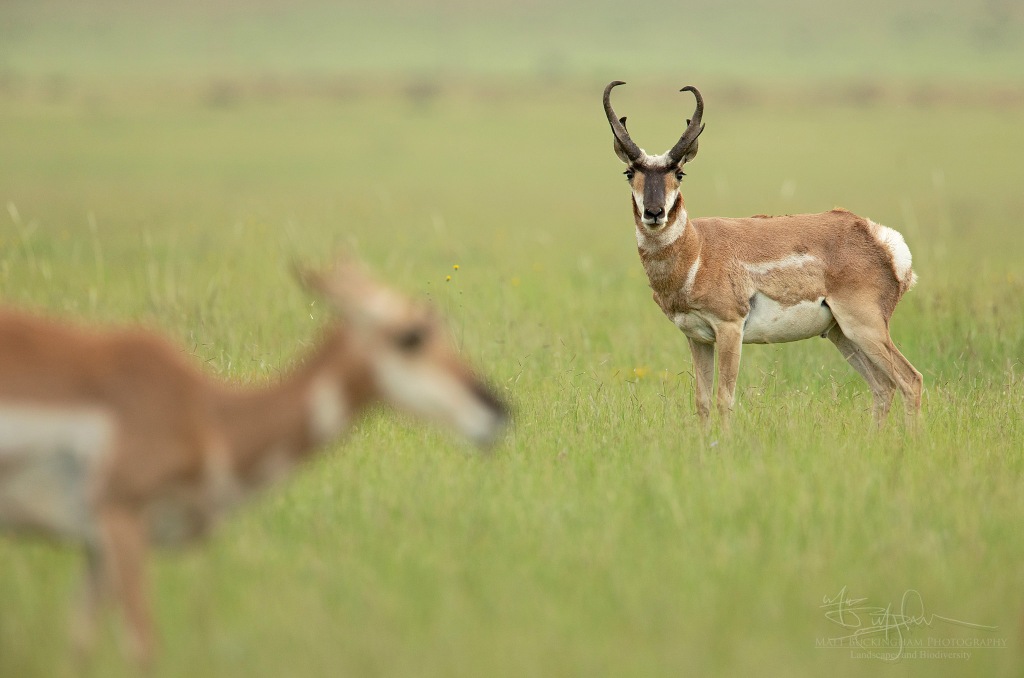
In August, we took another trip with James and Erin, this time to the Davis Mountains of west Texas. We cooked chili and watched skunks in our campsite, visited old friends with land in the mountains, and were treated to one of the finest monsoon seasons in recent memory. I took the opportunity to spend some time with one of my favorite animals, the pronghorn (Antilocapra americana). I spent one evening with this group and was treated to numerous photo ops. This image was my favorite, with the buck looking toward a seemingly indifferent doe in the foreground.
16. Scaled Quail

On our last morning in west Texas, James and I were treated to a cooperative Scaled Quail (Callipepla squamata) that was running about his territory. He afforded us several good looks on a variety of perches. The air smelled of fresh rain as we laid in the damp ground to photograph him from his level. It was the perfect way to close out a memorable rip.
17. Pygmy Nuthatch
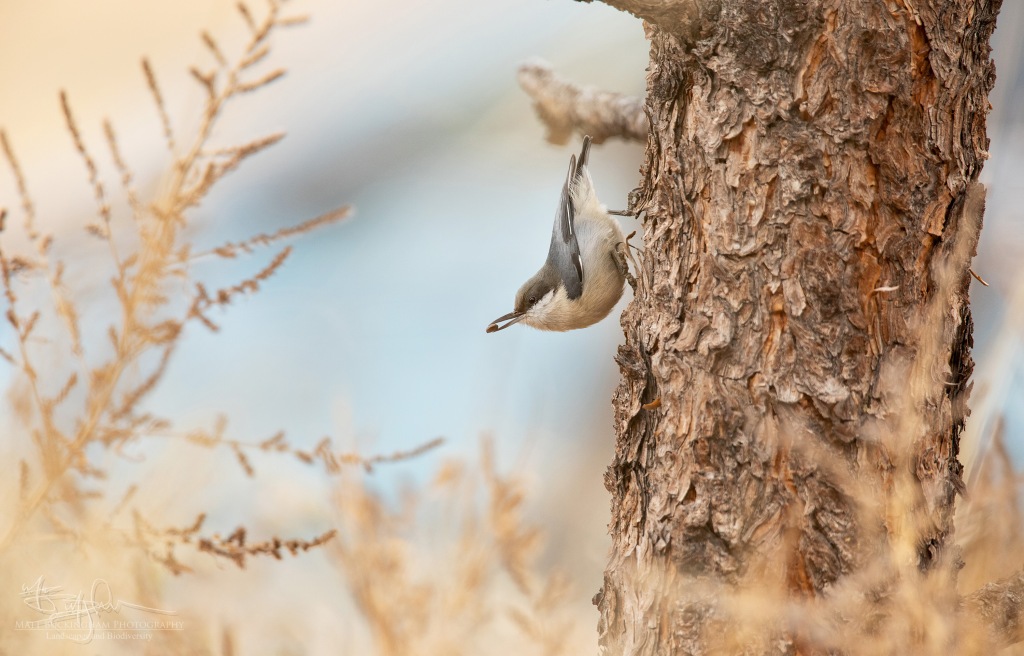
In mid-October, Caro and I found ourselves in Colorado enjoying the tail end of a Rocky Mountain autumn. While hiking in Rocky Mountain National Park, we found ourselves among a flock of Pygmy Nuthatches (Sitta pygmaea). They were everywhere! I soon found, however, that trying to chase after them for a photo would not work. So I sat down with my back against a ponderosa pine and waited. Within minutes they were foraging all around me, and I captured this image of one near the ground with a nut in its bill.
18. American Bison
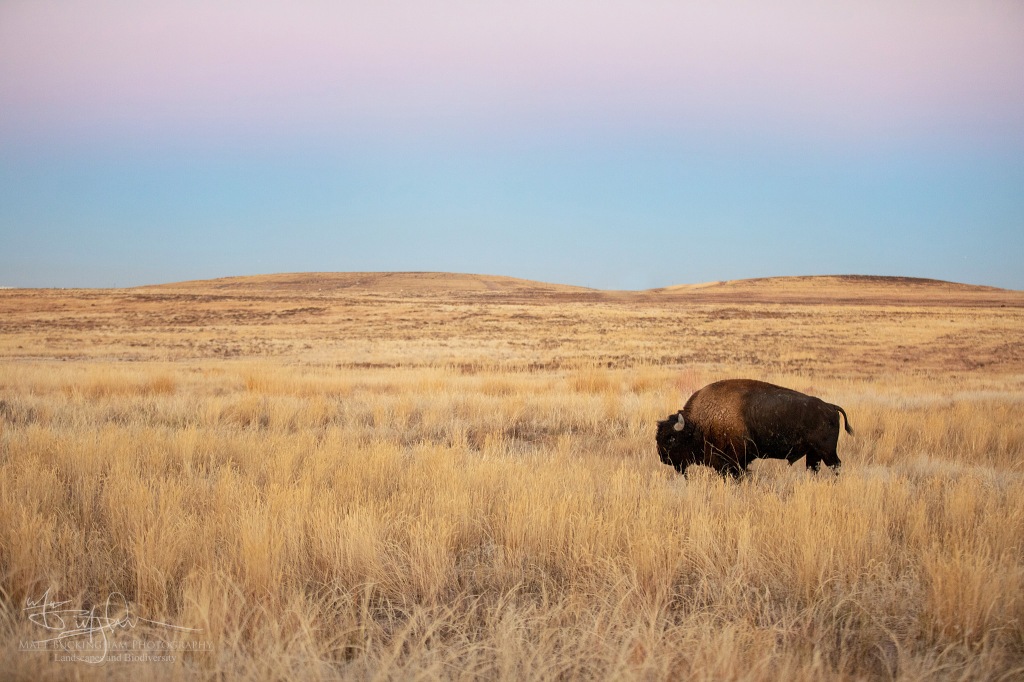
While in Colorado, we visited Rocky Mountain Arsenal National Wildlife Refuge. There we photographed plains bison (Bison bison), and even saw our first black-footed ferret! To learn more about the incredible story of this refuge check out my write-up on Flickr.
19. White-tailed Deer Doe and Fawn

Earlier in December I had to travel to Austin to present a research proposal examining the impacts of erosion control blankets on wildlife. The meeting fell on a Friday, so I took the opportunity to visit my brother and get out to some area nature preserves. Over the past couple of years, white-tailed deer (Odocoileus virginianus) have quickly become one of my favorite photographic subjects. While it is always exciting to photograph mature bucks during the rut, it is equally as special to capture tender moments between a fawn and its mother.
20. White-tailed Deer Buck

The following week, Caro and I traveled to south Texas to observe and photograph the white-tailed deer rut, which kicks off later there then elsewhere in the state. I witnessed a myriad of interesting rutting behavior, including an intense fight between two mature bucks. Photographically speaking, the most exciting moment for me came together in this image. I saw this buck in an open field. There was a crooked old mesquite nearby, and I thought to myself “wouldn’t it be amazing if he went to that tree to scent mark.” Then, much to my disbelief he began walking straight for it. I positioned myself in hopes that everything might come together, and sure enough, he visited and marked a licking branch at the old mesquite. A nice buck in perfect light in a beautiful setting – everything lined up for this one in a way that seldom happens.
21. Sandhill Cranes

The week before Christmas, we took our last big trip of 2021. We again found ourselves traveling with James and Erin, this time to south-central New Mexico. There we spent much of our time at Bosque del Apache National Wildlife Refuge – a place famous for wintering Sandhill Cranes (Grus canadensis), Snow Geese, and a variety of waterfowl. One evening we found ourselves watching throngs of cranes come into a shallow pond to roost. The conditions were perfect, and as they descended, we were able to capture them silhouetted against a fiery sky.
I think this image is a fitting end to my journey through 2021. The sun is setting on this year but will rise again in 2022. I hope the New Year brings you much joy, laughter, opportunity, and time in wild places. Thank you all for coming on this journey with me, and I wish you a very safe, happy New Years.
